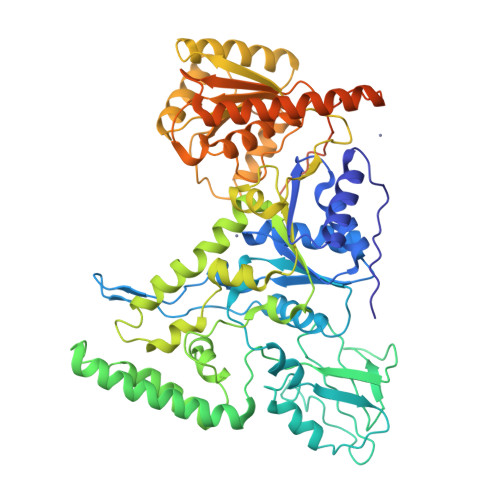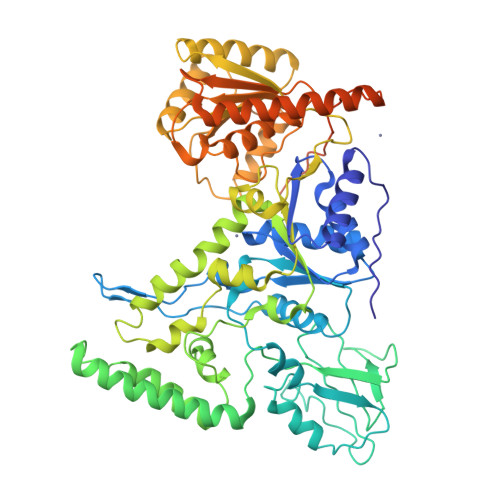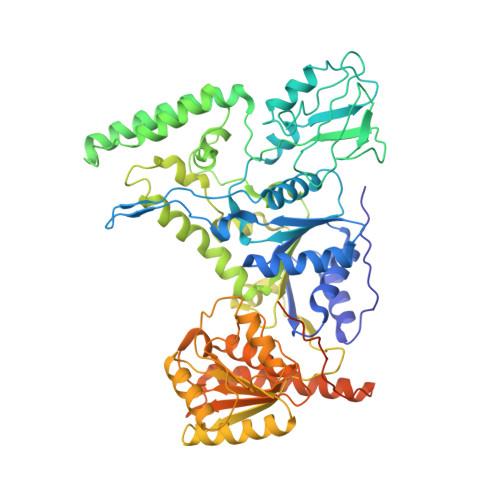Crystal structure of UvrB, a DNA helicase adapted for nucleotide excision repair.
Theis, K., Chen, P.J., Skorvaga, M., Van Houten, B., Kisker, C.(1999) EMBO J 18: 6899-6907
- PubMed: 10601012
- DOI: https://doi.org/10.1093/emboj/18.24.6899
- Primary Citation of Related Structures:
1D9X, 1D9Z - PubMed Abstract:
Nucleotide excision repair (NER) is a highly conserved DNA repair mechanism. NER systems recognize the damaged DNA strand, cleave it on both sides of the lesion, remove and newly synthesize the fragment. UvrB is a central component of the bacterial NER system participating in damage recognition, strand excision and repair synthesis. We have solved the crystal structure of UvrB in the apo and the ATP-bound forms. UvrB contains two domains related in structure to helicases, and two additional domains unique to repair proteins. The structure contains all elements of an intact helicase, and is evidence that UvrB utilizes ATP hydrolysis to move along the DNA to probe for damage. The location of conserved residues and structural comparisons allow us to predict the path of the DNA and suggest that the tight pre-incision complex of UvrB and the damaged DNA is formed by insertion of a flexible beta-hairpin between the two DNA strands.
Organizational Affiliation:
Department of Pharmacological Sciences, State University of New York at Stony Brook, Stony Brook, NY 11794-8651, USA.

















